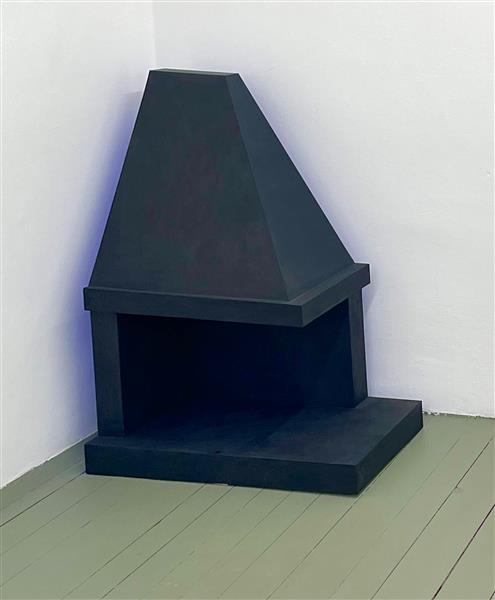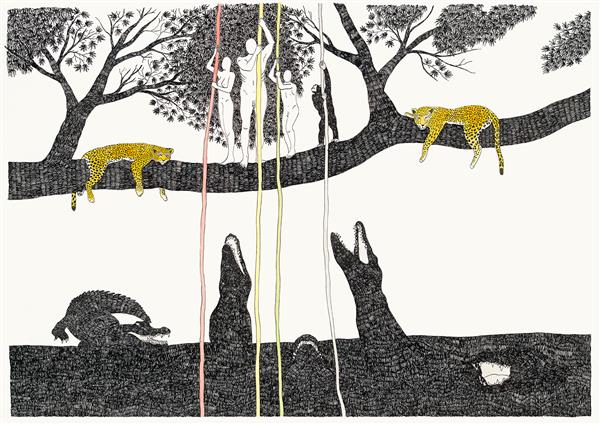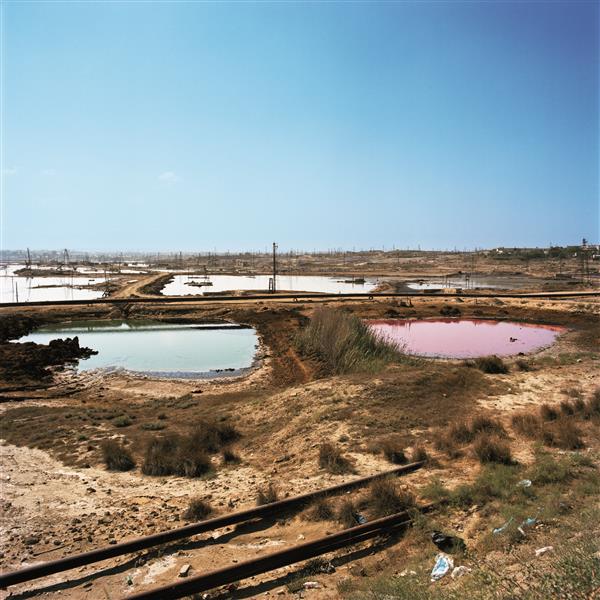Biogas Installation
Atelier van Lieshout
various materials, plaster and foam plastic
121 × 122.4 × 63.2 cm
2007
Acquisition 2008
Inv. No. 0172
Founded by Joep van Lieshout1 in 1995, Atelier van Lieshout (AVL) explore the context of art, design, and architecture and these fields’ interfaces with technology and environment. In a logical extension of AVL’s ideas to a comprehensive concept of society, the independent city state “AVL-Ville” was founded in the harbor of Rotterdam in 2001. Though the premises were cleared by the authorities after only one year, many of the ideas on living, urbanism, and the extraction and utilization of resources which were developed there figure prominently in the collective’s subsequent projects.
The model Biogas Installation from 2007 may also be seen in this context: biogas technology is a subject that AVL have been concerned with for many years. At the Venice Biennale in 2003, for example, AVL’s contribution centered on digestion, disposal, and recycling in the form of a group of works, The Technocrat, which comprised several machines, sculptures, and architectural elements. All operations are considered as part of a cycle in which biogas is produced and processed as a raw material for providing energy. The project Slave City, whose beginnings date back to 2005, deals with the issue of recycling, too. The approach encompasses all processes of life: as a zero-energy model city, Slave City provocatively stands for such modern management values as rationality, economic efficiency, and profitability. The favorable energy balance can be primarily achieved thanks to the enormous commitment of its 200,000 inhabitants (seven hours of office work, seven hours of work in the fields, three hours of regeneration, seven hours of sleep), the subjection pushing the envelope to the utilization of their organs. In its rigorously consistent realization, this concept of life, which AVL themselves called a “sinister dystopian project”2, drastically illustrates the problems of a society exclusively fixated upon efficiency.
Models like the Biogas Installation display the units and buildings necessary for the life in Slave City. All elements of the sculpture comply with the design’s functional operation. The smooth, white plaster surface relates to the world of art, while the delicate inscriptions strike us as links between craft, technology, and design. Joep van Lieshout’s assertion that a house is no purpose, but an expression3 has found its particularly successful translation in this installation.
Heike Maier-Rieper, 2011 (translation: Wolfgang Astelbauer)
1) In 2001, the evn collection purchased Joep Lieshout’s Kitchen Unit from 1990.
2) AVL’s synopsis of the Slave City project: http://www.ateliervanlieshout.com/.
3) Heinz-Norbert Jocks, “Häuser sind wie Hüllen, die man um sich herum baut. Ein Gespräch mit Joep van Lieshout,” in: Kunstforum international, vol. 184, 2007, 156.
Continue readingExhibitions
Wallpaper #5, evn sammlung, Maria Enzersdorf, 2022
Publications
evn collection. 2006–2011, Cologne 2011, p. 164–167



